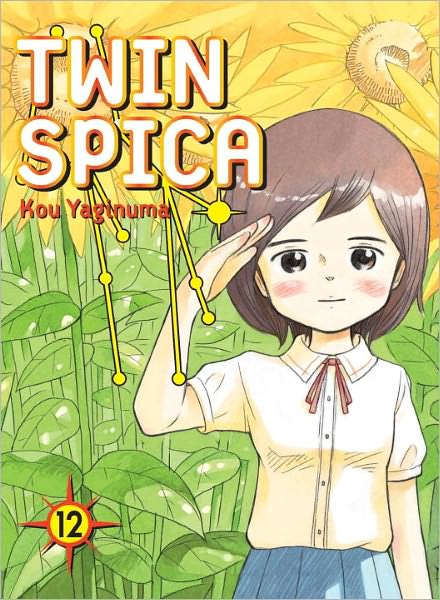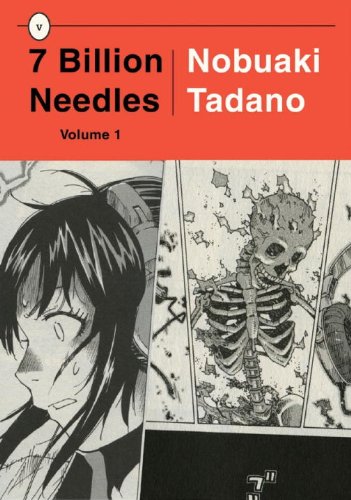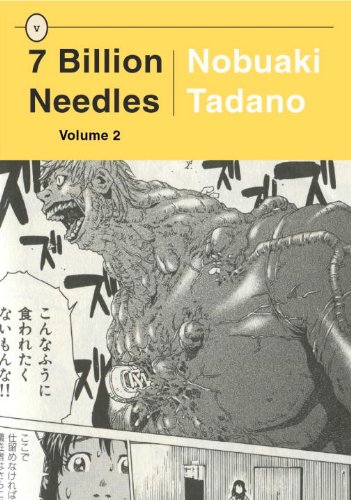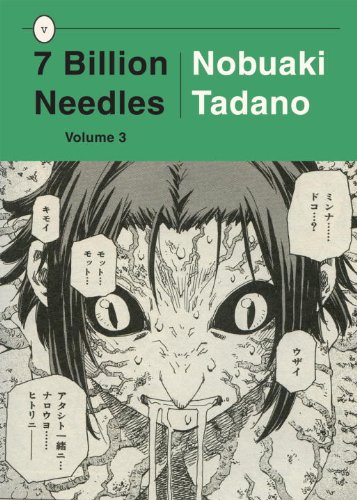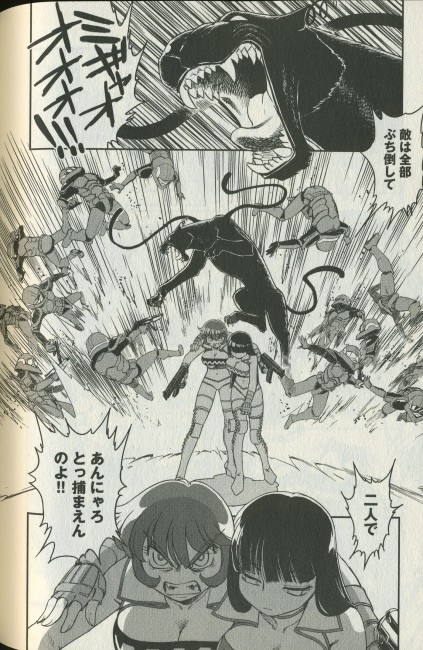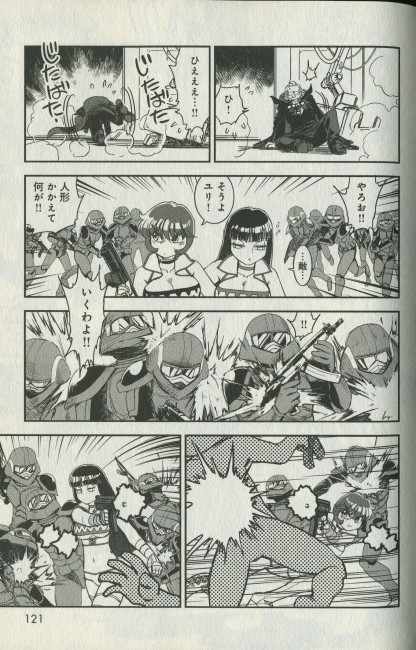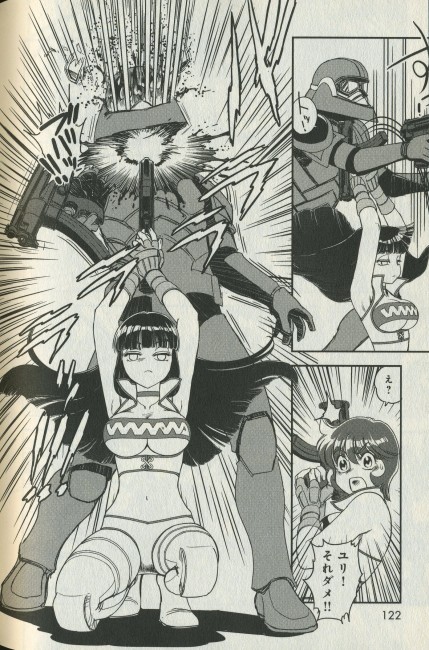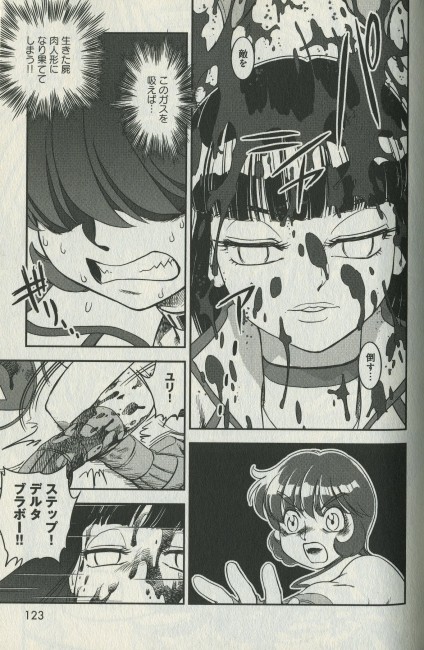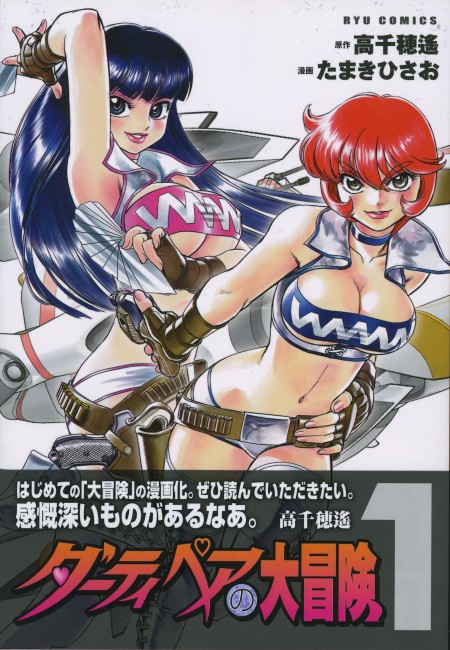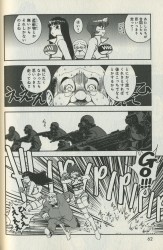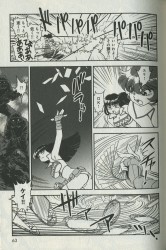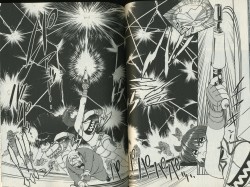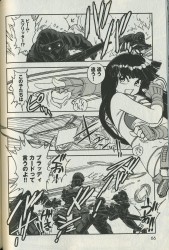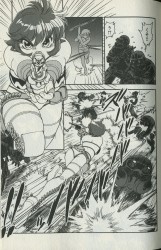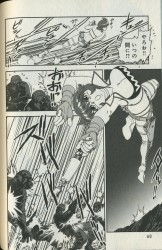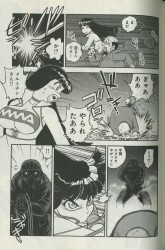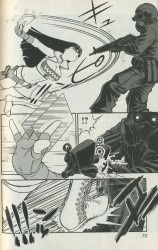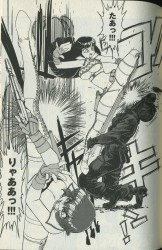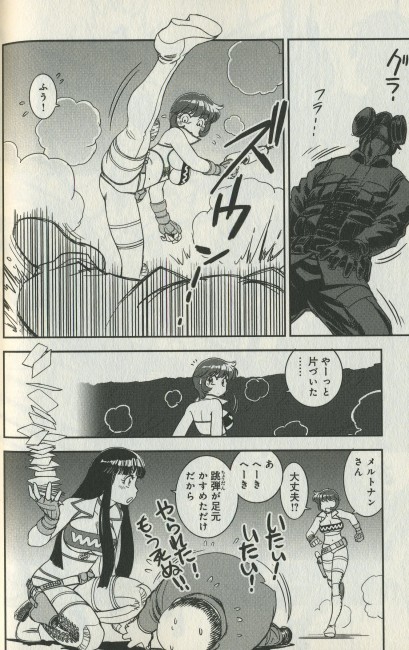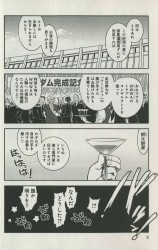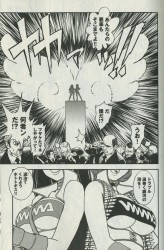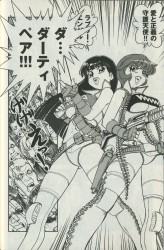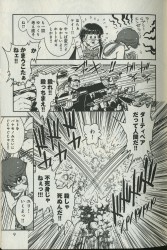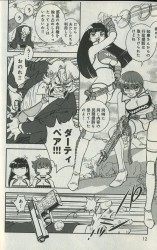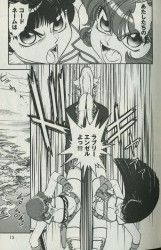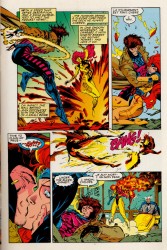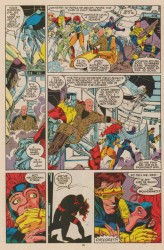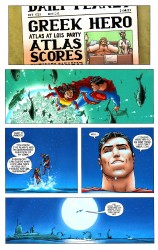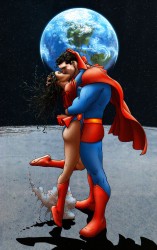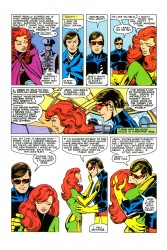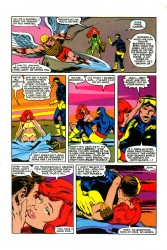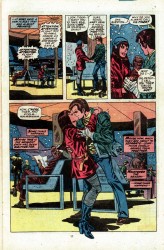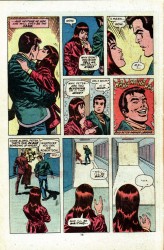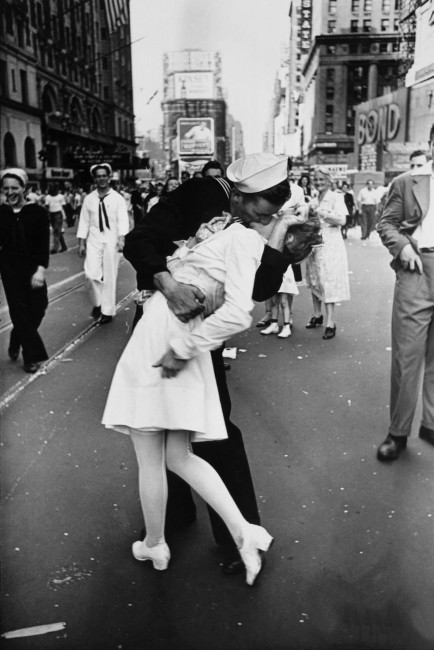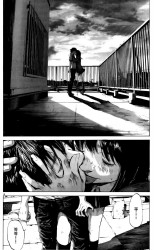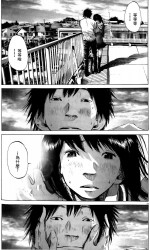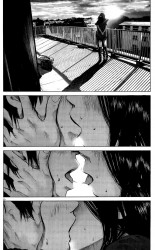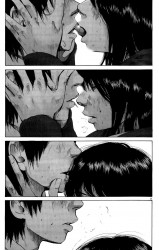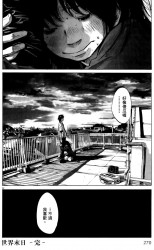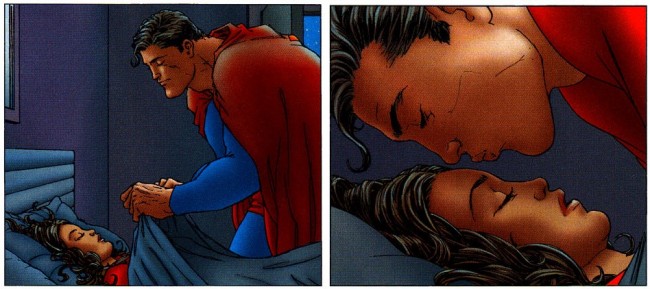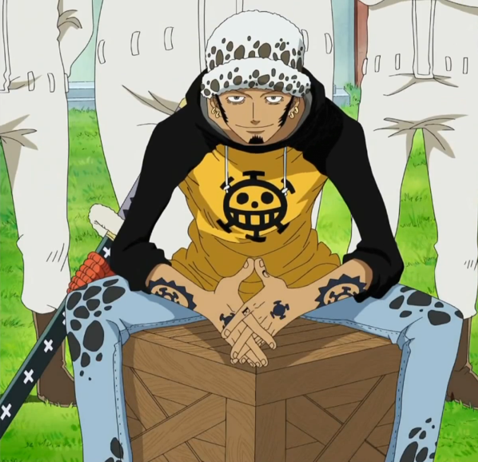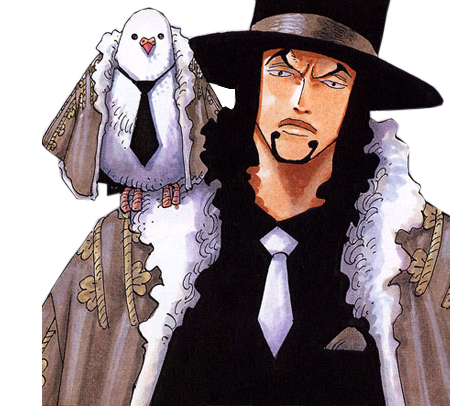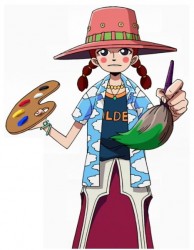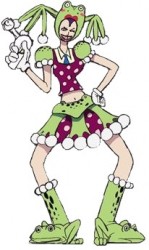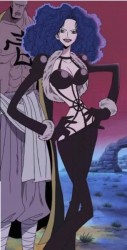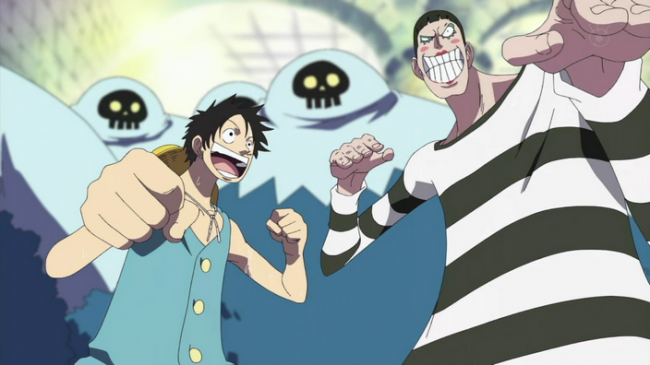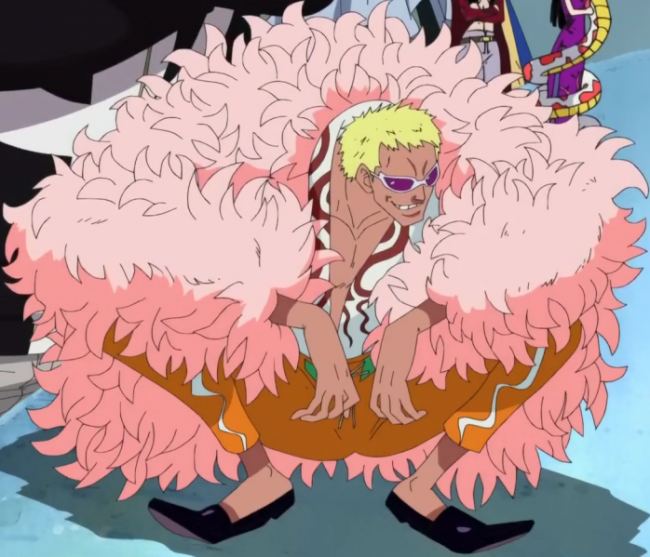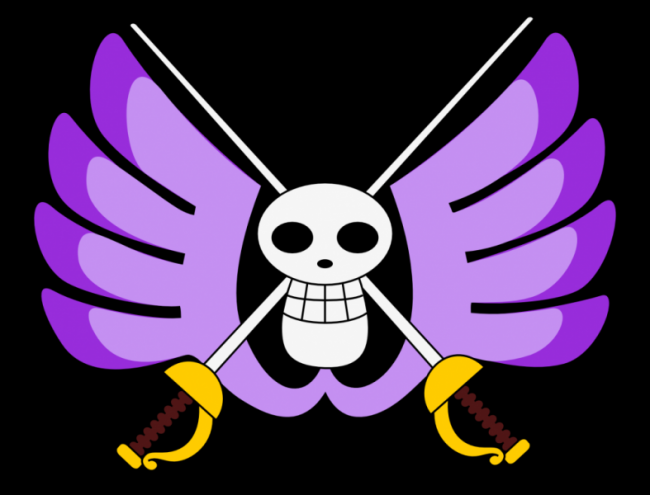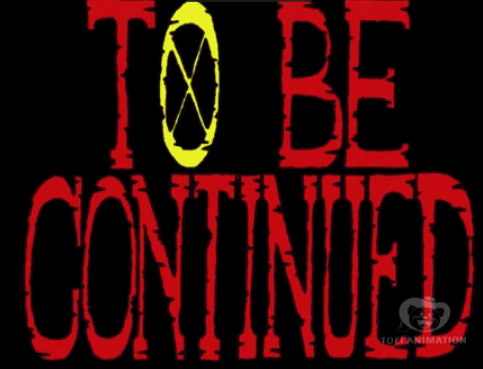
Cartoonishly virile, absurdly smooth: The Crying Freeman Story
May 25th, 2012 Posted by david brothersIt’s sorta interesting to me that cape comics have survived as a juvenile male power fantasy for so long. I don’t mean that in terms of being childish or whatever, but more literally. The love triangles, skimpy costumes, brawny dudes, stunted sexuality, and simplistic morals all read sorta teenaged to me. That’s part of the appeal, I think, because things are much simpler in cape comics than they are in real life. There’s a really boring essay to be written about that fact, I figure, but that’s not the point.
Kazuo Koike and Ryoichi Ikegami’s Crying Freeman is some type of male power fantasy, but I can’t figure out what type. I decided to read the series whe Dark Horse started putting them up because I have vague memories of enjoying the movie as a kid. Plus, I dig on that whole ’80s Hong Kong aesthetic; the aviators, dusters, revolvers, and all that stuff. The John Woo/Chow Yun-fat steez.
The thing is, Crying Freeman starts as one thing (reluctant hitman who cries when he’s forced to kill) and evolves into another thing entirely when he’s made chief of the 108 Dragons triad. What follows is a lot of naked fighting and some pretty absurd sexual situations. I mean, there’s a bit where a guy attempts to make two body doubles for Freeman. Of course, Freeman is the overman, so they do a lot of work making sure that the doubles know his every movement and twitch so they can be perfect. Then, the lady who lured Freeman into the trap, Kimie, sleeps with Freeman in order to “absorb his every single sexual habit” so that when the doubles sleep with Freeman’s wife, she’ll believe that it’s actually him.
This is already pretty dumb, but it keeps going. They go at it for at least an hour, also known as “something like thirty pages of straight sex while onlookers gawk at his prowess.” Oh, and while all this has been going on, Freeman has been dosed with some type of super aphrodisiac that’s theoretically put him out of his mind with lust. Freeman invents a couple new fetishes for himself to throw off the onlookers (choking, mainly, and everyone Hmm!s and Aah!s over it and briefly psychoanalyzes him), but the rub is insane. He never comes, and that drives Kimie crazy. “You’re making me lose face as a woman!!” crazy. And then, on the night Freeman is due to die, Kimie sleeps with him again and betrays her criminal conspiracy for him. He basically let this lady sex herself into complete and total submission. And this isn’t even the strangest sex scene in the book.
Crying Freeman is incredible, is what I’m saying. I don’t know if it’s actually any good, but the stuff that Koike and Ikegami are putting down on the page is remarkable because it’s both extreme and strange. It’s a great book to read. It’s out there, and it’s out there in a way I hadn’t expected. Freeman, even when he’s hurt, always has the upper hand, having thought a dozen steps ahead and come up with insane reasons for doing things.
It’s the most Koike of Koike’s works, at least that I’ve read. The cartoonish Super Saiyan Level 4 Fusion-ha masculinity, the women who are sexy and dangerous until they meet Freeman and his incredible dick, the absurd criminal plots… all of this stuff I’ve seen elsewhere in Koike’s work, but it’s taken to such a ridiculous level in Crying Freeman that the book becomes as much a slow-motion train wreck as exploitation comic. Takao Saito’s Golgo 13 features some of the most manly manliness ever, and it still never manages to hold a candle to Crying Freeman.
If you’ve ever read anything featuring Golgo 13, whose own prodigious penis got a bio of its own in a volume of the manga, you understand exactly how outlandish Koike and Ikegami’s collabo is. I came in expecting a traditional crime comic, and instead got Crime Comix Plus. Freeman’s outthinking and out-screwing levels are off the charts, to the point where the book regularly shatters your suspension of disbelief.
Por ejemplo, this happens when Freeman returns to the 108 Dragons late in volume 5:

Those are gangsters, by the way, showing high school cheerleaders how to stunt properly.
Or this bit, which comes after a sexy might-as-well-be-naked eskimo assassin (she wears a fur coat sometimes, but is otherwise nude under it, because… of the arctic? I dunno) attempted to ambush Freeman in the dark while wearing a see-thru wetsuit, because apparently eskimos have great night vision and are built like porn stars:

No one has ever said or thought this. Ever.
Or this, where Freeman eavesdrops on a drug deal and kills three men before they can even draw their weapons:




(In their defense, if some dude in a suit hopped out of a pile of fish, I’d be frozen in awe, too. the only appropriate sound effect for that sight would be a harsh “ZANG!” or something.)
Or this, which I feel sorta speaks for itself:




I still don’t know what type of male fantasy this is. Like, is this how dudes dealt with impotence pre-Viagra? “This has never happened to me before, honest, but luckily I can go home in shame and read about a guy who is not only the most masculine man ever but also sensitive inside despite his magnificent penis and incredible aptitude for killing.” Does this represent some ’80s-era fear that I’m just not in the know on? Or is it just a couple dudes making a ridiculous comic that wears perfectly sensible clothes, as far as adventure comics go? I mean, it looks and quacks like a crime comic, maybe a little more heightened than I usually go for, but then you hit a speedbump that’s outlandishly sexed up (three or four times a volume, I figure) and pause to go “Whoa, wait? Is this supposed to be sexy?” What were Koike and Ikegami going for, here?
I know from male fantasies, too. Budd Root’s Cavewoman or Witchblade. They’re sexy girls with big boobs, and sometimes you get to see them (or parts of them, in Witchblade’s case), often when they’re doing exciting action-y things. Superheroes speak to wanting to impose our will on basically everything ever and be winners/popular, yeah? Righting wrongs and having an amazing life. And the only people who haven’t dreamed of being outlaws, whether that means cowboys or gangsters, are squares, I figure. I’m being flip, but you know what I’m saying: it’s easy to look at a lot of comics and go “Oh, this speaks to this insecurity or fetish that some dudes have and serves as a corrective/object of arousal.” Even something as gonzo as Crank is pretty easy to ID. But Crying Freeman?
Crying Freeman is a trip, is what I’m saying.

